The Carrack, a Durham-based art and community space, is pleased to announce artist Saba Taj as its new Gallery Director. Taj assumes directorship as of
June 16.
Taj is a Durham-based artist, educator, and advocate who has been an active member of the local arts community since 2009. As a founding member of Durham Artists Movement and an arts educator, she has sought to help individuals from marginalized communities be empowered to create and share their own art. She has studied at North Carolina Central University (BA, 2011) and the University of North Carolina at Chapel Hill (MFA in Studio Art, 2016).
“I believe in increasing representation in the arts,” Taj says. “The issue of representation is not only relevant to works of art, but also within the landscape of galleries and art institutions. The Carrack has a legacy of centering artists and fostering an artists’ community that is collaborative and self-determining. I see this work as parallel to my own art practice, with values that deeply align with my own.”
In her art practice, Taj challenges racism and xenophobia through empowered representations of people of color. Taj has been a 2017 Southern Constellations Fellow and a TedxDuke 2017 speaker, and has been featured in The Guardian, Huffington Post, and Durham magazine.
Taj has been an active part of The Carrack’s community since 2012. She has had two solo exhibitions and curated numerous group exhibitions at The Carrack, served on its Advisory Board in 2016, and has participated through the years as a volunteer and collaborator.
“I am excited to be building relationships with artists and patrons,” Taj says. “I look forward to the challenge of fostering community and a sustainable, accountable space for artists and for Durham, and brainstorming new projects and initiatives that can expand our reach and our ties to the broader Durham community. And I’m just such a nerd about the arts so I’m pretty thrilled to be around it all the time.”
With outgoing director and founder Laura Ritchie, The Carrack’s Advisory Board conducted a rigorous review process of applicants and are pleased to announce Taj’s appointment.
“I have complete confidence in Saba,” Ritchie says. “She already feels like an extension of The Carrack’s family and we’re thrilled to now welcome her as Gallery Director.”
“For as long as I have known her, Saba has demonstrated an exceptional commitment to the arts in Durham through her own art practice and as an advocate for other artists. It’s been an honor to grow with and learn from her as a peer in this community and I cannot wait to see where she leads this project.”
Ritchie expresses gratitude to The Carrack’s Advisory Board for their thoughtfulness through the process of considering applicants, and to her colleague Kerry Crocker, Operations Director at The Carrack, for her steadfast guidance and support in this transitional period for the organization. Ritchie also conveys a deep appreciation to The Carrack’s volunteers and donors for forming a strong foundation for The Carrack that will allow the organization to thrive in times of change.
The Carrack has recently launched a fundraising effort on the Patreon membership platform. With an imminent change into a nonprofit organization, The Carrack will soon phase out its fiscal sponsorship through Fractured Atlas. The Carrack’s annual fall fundraising event, The Muse Masquerade, will soon be announced.
About The Carrack
The Carrack is an artist-centered, volunteer-run, zero-commission art space in Durham, North Carolina that hosts short, rapidly rotating exhibitions, performances, workshops, and community gatherings. The Carrack proudly supports the work of creators who are underrepresented in the art world at large, including artists of color; queer and trans artists; and artists who are emerging, experimenting, or producing temporal and/or site-specific work. All artists and organizers use The Carrack for free, have complete creative control over the presentation of their work, and keep 100% of what they make from sales if they choose to sell. The Carrack is entirely funded by grassroots donations and sustained by a team of volunteers. Since opening in Durham, NC in 2011, The Carrack has exhibited work by over 1,000 artists and hosted over 160 exhibitions and numerous performing arts events.

